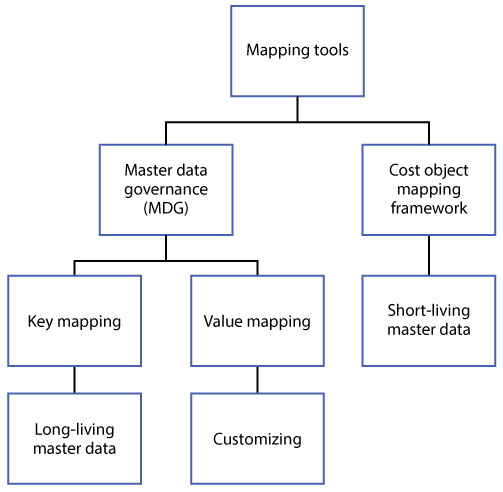Learn about the concept, purpose, configuration, and execution of the cost object mapping framework in SAP Central Finance.
Learning Objectives
Reading this article, you’ll learn:
- The purpose the cost object mapping framework serves in SAP Central Finance
- How to configure scenarios
- How to define the mapping rules
- How to replicate cost objects
- How to replicate an accounting document from the source system with a cost object
Key Concept
SAP Central Finance in SAP S/4HANA offers a new configuration for the cost object mapping framework, which is mainly used for short-living cost objects such as an internal order, a production order, or a service order.
Organizations with a heterogeneous landscape (more than one SAP ERP instance or non-SAP system instances) that want to adopt SAP S/4HANA Finance can find the following tasks for this adoption daunting:
- Migrate all the instances to the SAP HANA database
- Upgrade all the instances to SAP ERP Central Component (ECC) 6.0 and enhancement package 7
- Install the SAP S/4HANA Finance add-on on all the instances
These tasks increase the complexity, effort, and cost for adoption of SAP S/4HANA Finance. To keep it minimally disruptive for such customers, SAP came up with an innovative deployment option called SAP Central Finance. This topic has already been covered in detail in a separate Financials Expert article, “A Holistic Approach to Implementing Central Finance.”
One of the challenges of moving to SAP Central Finance is to harmonize the data across different source systems. For example, different source systems might be using different operational charts of account. Each financial document posted in the source systems is replicated into the target SAP Central Finance system. However, before the financial postings are replicated, you can harmonize the general ledger (G/L) accounts by maintaining G/L accounts mapping between the source and the target systems
Tools Available for Data Mapping in SAP Central Finance
Data mapping in SAP Central Finance can be done as shown in Figure 1.
As you can see in Figure 1, data mapping in SAP Central Finance can be achieved by means of master data governance (MDG) and a cost object mapping framework.

SAP Central Finance data mapping

Kavita Agarwal
Kavita Agarwal is an SAP FI/CO and SAP S/4HANA solution architect with more than 16 years of experience. She is well known for her contributions to the SAP Community Network (SCN) Forum and is a platinum level contributor there.
She has experience with medium- to large-sized SAP implementations and rollouts in several industries and geographies and has been part of major finance transformation programs in the chocolates and confectionary industry. She enjoys designing complex business processes and delivering SAP training in the areas of SAP FI and SAP S/4HANA.
Currently, she works as an independent consultant helping customers optimize their SAP systems to derive maximum benefits out of their SAP investments and also offers e-learning solutions in SAP FI/CO.
